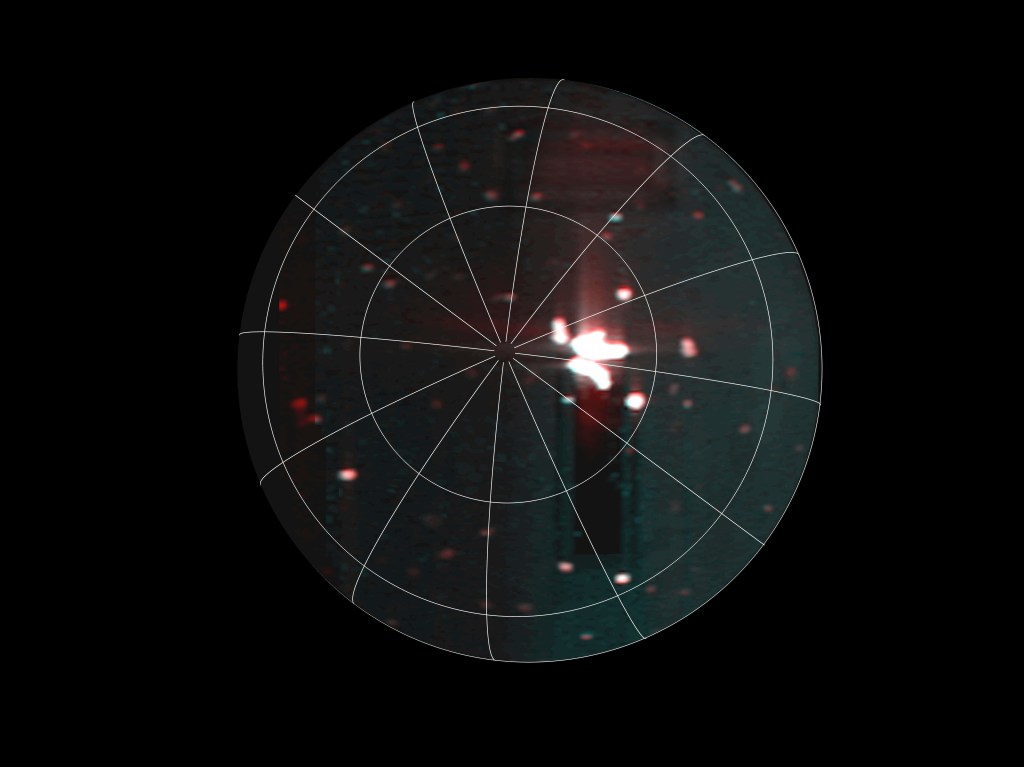Credits: NASA/Greg Shirah
A new animation from NASA paints the colors of the wind in a tropical low pressure area that was investigated during NASA’s 2013 Hurricane and Severe Storms Sentinel or HS3 mission. The visualization shows wind streams from a tropical depression in the Gulf of Mexico revealing speed and direction of winds at various levels.
“HS3 scientists are using data from the unmanned Global Hawk to better understanding why some storms develop into hurricanes and others do not,” said Dr. Scott Braun, HS3 Principal Investigator from NASA’s Goddard Space Flight Center in Greenbelt, Maryland.
NASA’ HS3 mission is in its third year flying a remotely piloted Global Hawk aircraft. During the HS3 mission’s second year, a Global Hawk flew over Invest 95L in the Gulf of Mexico between September 19 and 20, 2013 and dropped 88 sondes.
A sonde is a device that measures winds, temperature, and humidity. When the sondes are dropped from aircraft like the unmanned Global Hawk, they are called “dropsondes.” Dropsondes transmit their information over radio frequencies. The Global Hawk dropped the dropsondes as it flew in a lawnmower-like pattern over the storm.
As the dropsonde probes fell through the atmosphere, atmospheric measurements including wind direction were recorded. Wind direction data from 88 different dropsondes were merged to create a picture of the wind field at different levels of the atmosphere. The visualization shows particles moving through the flow field.
The atmosphere is exaggerated 10 times in the animation to help make the various levels of the atmosphere more identifiable. Only a thin slice of the atmosphere is shown at any given time, represented by a vertically moving horizontal window.
The color of the winds represent altitude. In the animation, the winds at ground-level are shown in white. Higher altitude winds, around 10 km (6.2 miles), are shown in orange and the highest altitude winds, around 15 km (9.3 miles), are shown in red.
“The flows show both direction as well as speed,” said Greg Shirah, visualizer at the Scientific Visualization Studio at NASA Goddard, who created the animation. “However, the speed is not conveyed with color, but by the length of the lines as well as how fast the lines are moving. Each line can be thought of as a history of where a particle has travelled through the flow field over a fixed period of time (in this case, 2 hours). So, for longer lines, the particle travelled farther in 2 hours than a particle in shorter lines did, so the longer line passed through a region with a higher velocity flow.”
“Lower level winds show the cyclonic circulation associated with the tropical disturbance,” Braun said. “But just above those cyclonic winds, the storm was thwarted by wind shear, prohibiting further development into a tropical cyclone.”
NASA’s HS3 mission is a collaborative effort that brings together several NASA centers with federal and university partners to investigate the processes that underlie hurricane formation and intensity change in the Atlantic Ocean basin. The 2014 flights from NASA’s Wallops Flight Facility in Virginia will take place between Aug. 26 and Sept. 29 during the peak of the Atlantic hurricane season that runs from June 1 to Nov. 30.
The HS3 mission is funded by NASA Headquarters and overseen by NASA’s Earth System Science Pathfinder Program at NASA’s Langley Research Center in Hampton, Virginia, and is one of five large field campaigns operating under the Earth Venture program. The HS3 mission also involves collaborations with partners including the National Centers for Environmental Prediction, Naval Postgraduate School, Naval Research Laboratory, NOAA’s Hurricane Research Division and Earth System Research Laboratory, Northrop Grumman Space Technology, National Center for Atmospheric Research, State University of New York at Albany, University of Maryland – Baltimore County, University of Wisconsin, and University of Utah. The HS3 mission is managed by the Earth Science Project Office at NASA Ames Research Center, Moffett Field, Mountain View, California.
For more information about NASA’s HS3 hurricane mission, visit: www.nasa.gov/hs3
For more information about dropsondes, visit: https://www.nasa.gov/content/goddard/what-the-heck-is-a-dropsonde/
Rob Gutro/Scott Braun
NASA’s Goddard Space Flight Center



























